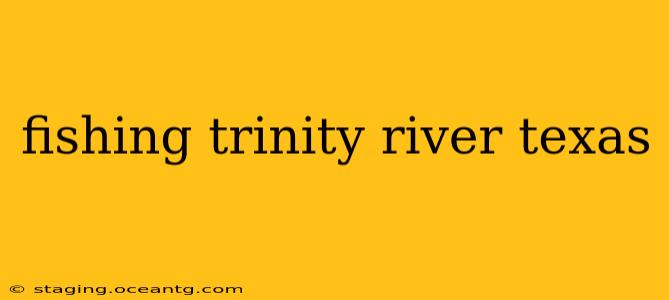The Trinity River, a vital artery flowing through Texas, offers a diverse and exciting fishing experience. From its headwaters in the rolling hills to its sprawling delta near Galveston Bay, the river boasts a remarkable variety of fish species, making it a popular destination for anglers of all skill levels. This guide will explore the best fishing spots, target species, techniques, and regulations to help you plan your next Trinity River fishing adventure.
What kind of fish are in the Trinity River?
The Trinity River ecosystem supports a robust population of various fish species. Some of the most sought-after include:
- Largemouth Bass: A staple in Texas waters, largemouth bass thrive in the Trinity's diverse habitats, offering thrilling fights for anglers.
- Channel Catfish: These whiskered bottom-dwellers are abundant throughout the river, providing consistent action for catfishing enthusiasts.
- White Bass: Known for their aggressive strikes, white bass are a popular target, particularly during their spring spawning runs.
- Gar: These ancient fish are a unique and challenging catch, adding a distinctive experience to Trinity River fishing. They are often caught using specialized tackle.
- Sunfish (Bluegill, Redear, Green Sunfish): These panfish are abundant, offering excellent opportunities for families and beginner anglers.
Where are the best places to fish in the Trinity River?
The best fishing spots on the Trinity River vary depending on the target species and time of year. However, some consistently productive areas include:
- Lake Livingston: Located upstream, this reservoir offers excellent largemouth bass, crappie, and catfish fishing.
- Lake Lewisville: Another upstream reservoir, providing good opportunities for various species, including white bass and striped bass.
- Downstream sections near Dallas and Fort Worth: These areas offer access points for targeting catfish and other species.
- The lower Trinity River near Liberty and Beaumont: Excellent for saltwater-influenced species like flounder and speckled trout as you get closer to the Gulf.
Remember to check local fishing access points and regulations before heading out. Many areas require licenses and permits.
What is the best time of year to fish the Trinity River?
The ideal time to fish the Trinity River depends on your target species:
- Spring: Excellent for white bass spawning runs and largemouth bass activity.
- Summer: Offers good opportunities for catfish and largemouth bass, though hotter temperatures can affect fishing.
- Fall: Another excellent period for largemouth bass, as they feed up for the winter.
- Winter: Catfish fishing can remain consistent during milder winter months.
Consider the weather conditions and water temperatures when planning your trip.
What are the fishing regulations for the Trinity River?
Fishing regulations in Texas are governed by the Texas Parks and Wildlife Department (TPWD). It's crucial to familiarize yourself with these regulations before fishing, including:
- Licenses and permits: Required for most anglers.
- Bag limits: Restrictions on the number of fish you can keep.
- Size limits: Minimum and maximum sizes of fish you can keep.
- Species restrictions: Certain species may have special regulations.
Visit the TPWD website for the most up-to-date information and regulations.
What is the best bait to use for fishing in the Trinity River?
The best bait will depend heavily on your target species. However, some popular options include:
- Live bait: Minnows, worms, and crickets for panfish and bass.
- Artificial lures: Spinnerbaits, crankbaits, and plastic worms for bass.
- Catfish baits: Chicken liver, stinkbait, and cut bait.
What types of fishing techniques are successful in the Trinity River?
Different techniques work best depending on the species and location:
- Spinning: Effective for bass, white bass, and other species.
- Casting: A versatile technique for various lures and species.
- Trolling: Useful for covering larger areas, particularly in reservoirs.
- Bottom fishing: Ideal for catfish and other bottom-dwelling species.
By understanding the nuances of the Trinity River's diverse ecosystem and adhering to responsible fishing practices, you can ensure a rewarding and memorable fishing experience. Remember to always practice catch and release for certain species and follow all TPWD regulations. Tight lines!
